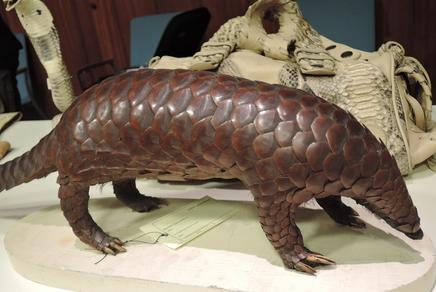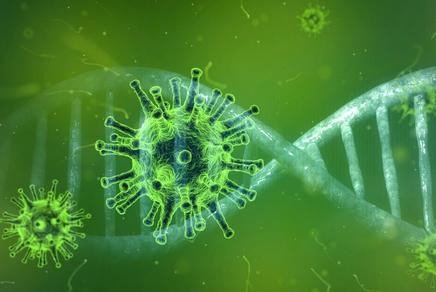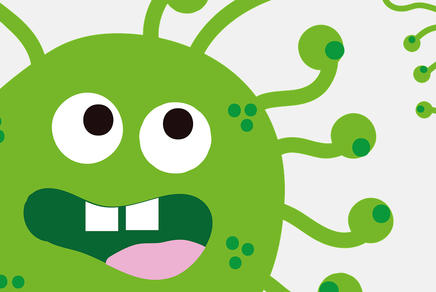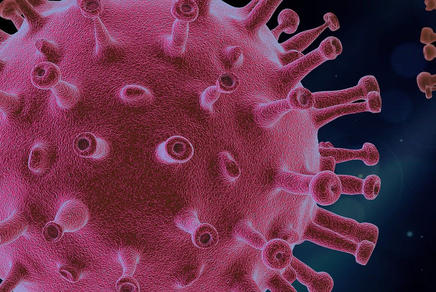Newsletter
There is no boring virus: Portrait of the virologist Tim Skern
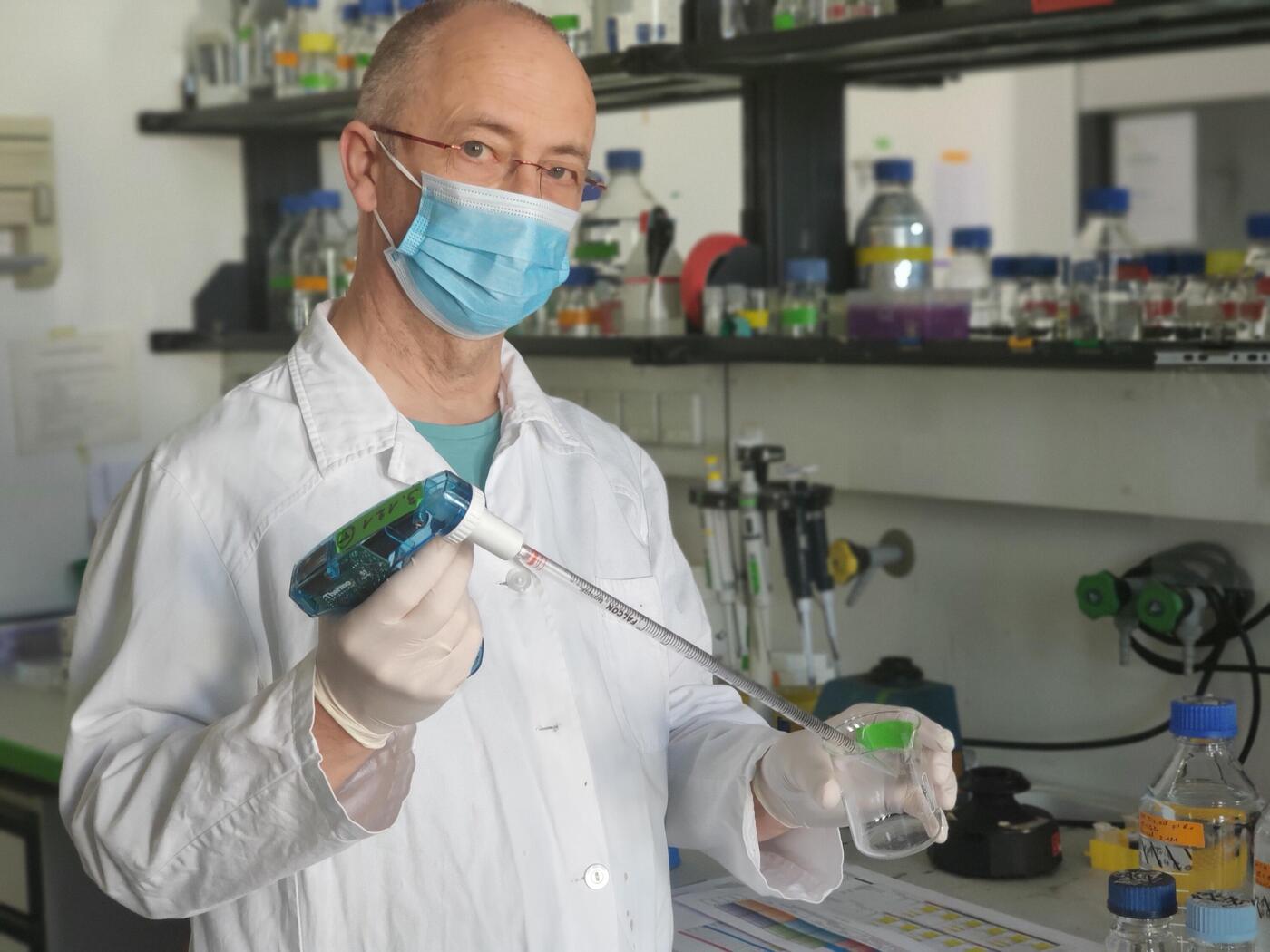
Tim Skern in the lab, Bild: Felix Kreppler, Max Perutz Labs (CC-BY-SA 3.0 AT)
Open Science asked Tim Skern for an interview. The passionate virologist from Vienna talks about his field of research, his passion for viruses in general and of course about SARS-COV-2 and the pandemic it caused. After two years of Corona, Tim Skern answers questions about the current scientific knowledge concerning SARS-CoV-2 and tries to make a prognosis for the future.
Viruses - fascinating beings
-
Tim, you initially studied biochemistry. When did you take notice of viruses for the first time, and how did you become a virologist?
I heard about viruses for the first time when I contracted measles as a small child. That was before the vaccine was available. I also heard my father talk about how wonderful the poliovirus vaccine was.
I became a virologist by chance. I was looking for a post-doc in Vienna and I wrote to two or three labs and asked what research they were doing. The group of Ernst Kuechler were working on the common cold virus and they invited me to join them. I found viruses fascinating and decided to stay in the field.
- What exactly fascinates you about viruses?
I find it amazing that a virus that may be 1000 times smaller than a cell and only have 10-15 proteins can hijack a cell and turn the cell into a virus-producing factory within a few hours. Viruses need the help of a cell or host organism to reproduce themselves and are therefore generally not considered to be “alive”. The ability of viruses to outwit the highly advanced host immune system for this purpose is astonishing.
My group has researched into the above topics using proteins of different viruses, including the common cold virus.
- Viruses are generally being associated with negative things. Are there positive aspects of viruses as well? If so, in which context?
Viruses are responsible for the destruction of algal blooms in the sea and in general for making carbon sources in the sea. Without the enzymes of bacteriophages and the reverse transcriptase of retroviruses, there would be no gene technology at all. Viruses are being used as vectors for gene therapy and in vaccines. Several vaccines against SARS-CoV-2 that are being tested are based on adenoviruses.
- Do you have a favorite virus? If so, which one is it and why?
I find every virus astonishing and worthy of investigation. I have never known a boring virus.
SARS-Cov-2 pandemic
- In the course of COVID-19 there has been a lot of discussion about epidemics and pandemics in the media. What is the difference between these two?
An epidemic is an outbreak that is limited to a certain region, for example a continent, whereas a pandemic is a worldwide outbreak.
- There have been many pandemics in the history of humanity, claiming millions of deaths in some cases. But the thing is: Viruses don’t want to kill their hosts. Can you briefly explain this paradox to us?
Viruses like Ebola virus or SARS-CoV-2 have a host organism in which they copy themselves without causing disease. In both cases, that seems to be one or more species of bats. The viruses are adapted to their host and copy themselves without harming the host. When these viruses infect humans, they are not adapted to us and thus propagate themselves and cause damage to the host. In the case of Ebola, this is always a serious, often fatal disease. With SARS-CoV-2, the disease severity depends on the age and health status of the infected person.
- Where did SARS-CoV-2 arise?
Coronaviruses per se already exist for quite a while. The first members of this family of viruses were described in the mid-sixties. SARS-CoV already caused a pandemic in 2002/2003, and the MERS-CoV-epidemic started in 2012.
SARS-CoV-2 was described for the first time in 2019 and evolved from the recombination of two or more coronaviruses, probably in bats in China. The immediate precursor of SARS-CoV-2 has not and probably will never be found. However, all available evidence points to a transfer of a bat virus to humans in China with a superspreading event in the market in Hunan.
- What can you tell us about the coronavirus SARS-CoV-2 after two years of pandemic? What are the most important facts one should know?
The most important things to know about the virus is how to lower the chance of infection. Well-aired rooms, masks in enclosed spaces, physical distancing all considerably reduce the risk. This is especially so for the risk groups such as the over-60s, the overweight and diabetic individuals.
Since 2021, vaccination has shown itself to be an excellent method to reduce the severity of SARS-CoV-2 infections. However, the above measures alongside vaccination are still important to reduce transmission and the possibility of the emergence of new variants.
- The last winters were also marked by the coronavirus. How did SARS-CoV-2 affect the flu season?
The influenza seasons of 2020/21 and 2021/22 have not taken place because the measures against SARS-CoV-2 also prevent transmission of influenza virus.
- Is it possible to get infected with the coronavirus and the flu at the same time? Or a more scientific question: Can SARS-CoV-2 and the Influenza-virus infect a host at the same time, or do they exclude each other?
At present, there is evidence that if one respiratory virus is circulating, others will not be so effective. If there is a flu epidemic, there are fewer common colds. Since its emergence, the SARS-CoV-2 pandemic has reduced respiratory infections by almost all other pathogens with the exception of the common cold virus.
- What happens with the coronavirus in our body when symptoms disappear? Is the virus completely eliminated, or is there a possibility that SARS-CoV-2 embeds itself into the host-DNA and stays there?
SARS-CoV-2 may persist, but not in the host DNA. We need more data on long-term infections to see how long and where in the body the virus remains. Analysis of long COVID-19 patients indicate that most of them are negative for the virus. The reasons why some people have long-term symptoms is still unclear. One problem is the variety of symptoms shown by long-term COVID-19 sufferers.
- What is the present state of knowledge: Can one get re-infected with SARS-CoV-2 after having recovered from an infection?
Yes. one can get re-infected. The events of the last two years show that cases of re-infection are quite common, either because of a waning immune response or because of the emergence of a new variant.
- It is said that SARS-CoV-2 mutates quickly, and we have already experienced the emergence of many new variants. What are the consequences?
All viruses mutate. The question is whether they evolve to have new properties. The events of the last two years have shown waves of new variants with new properties, such as higher transmission (delta, omicron), higher virulence (delta) and lower virulence (omicron). Even though the transmission of omicron seems very high, there is still the possibility that a variant with a higher transmission rate may arise. The currently high levels (March 2022) of virus in many countries provide the virus with the opportunity to test the effects of many different mutations.
- The whole world has been waiting for a vaccine against SARS-CoV-2 eagerly. Several vaccines have now been developed, and vaccinations are going on all over the world. Will there be a vaccine against SARS-CoV-2 as it is the case for influenza on the long run, or will we rather try to find ways to cure COVID-19?
The virus was first isolated in January or February 2020, and we were testing vaccines 5 months later. That is amazing, absolutely amazing. The mRNA vaccines have proved themselves in the reduction of both transmission and in the reduction of the severity of the disease, despite the number of variants that have arisen. The next generations of vaccines are being developed. These should include vaccines directed at the omicron variant as well as against other proteins in the virus particle. One of the unexpected properties of the mRNA vaccines is to induce T-cells that destroy infected cells. Such T-cells recognise more of the spike protein than antibodies and are thus less vulnerable to viral evolution. These T-cells may be one reason why the mRNA vaccines reduce disease severity.
To come back to the initial question: It is better to prevent viral infections than cure them. Safe and effective drugs will be difficult to make and the problem of resistance must be overcome.
- What types of vaccines against SARS-CoV-2 have proved to be the best in your opinion?
As mentioned above, the mRNA vaccines have proved to be the most efficient and the best tolerated ones.
- What is your prediction: How will the Coronavirus develop? When will SARS-CoV-2 and COVID-19 be over?
Two years after the emergence of SARS-CoV-2, it is clear that we will have to live with this virus for the coming years. We are fortunate that omicron is less virulent. We must however try to reduce transmission in the human population to prevent the emergence of new variants that may show higher virulence than the omicron variant. And as Niels Bohr said, “Predictions are difficult, especially when they concern the future.”
Work in the lab and engagement in science communication
- How did you get involved in science? Has it always been your dream to become a scientist?
I found biology and chemistry fun at school. Biochemistry seemed to combine the two and I didn’t think that chemistry had much future in research so I decided to study biochemistry at university. I wanted to find a job after my bachelor but the careers advisor told me to do a PhD so I did. I wasn’t convinced that I was good enough to do a career in research but I realised I wasn’t trained for anything else so I kept applying for positions and kept being offered them. At some point, I realised I was becoming a research scientist with some interesting publications to my name.
I was the first person in my family to go to university so I certainly never dreamt of becoming a scientist.
- Please describe your typical workday.
Write, read, prepare teaching, discussions with colleagues from my lab, organisation of my division and so on. The order differs every day.
- In your opinion, what is the biggest challenge in science communication today?
The challenge to debunk conspiracy theories, the challenge of so-called “anti-vaxxers” and the challenge to bring sense to the discussion on the origin of SARS-CoV-2
- Can you tell us about your best experience in science communication?
This was the Science week 2000 (I think) in the Lugner City with Dialog Gentechnik. I think I reached so many people that week who would never normally be interested in science and gene technology.
- Which scientists impress you in particular, and why?
Of the well-known scientists, Rosalind Franklin and Francis Crick. Franklin was an expert in the fields of X-ray crystallography and the chemistry of coal. Crick was a genius – how did he know in 1953 that the DNA strands were anti-parallel? The scientist who I found most inspiring for my work was Michael Rossmann, a titan of structural virology.
- What is your favorite object in your lab or your office? What do you use it for?
The programs that I use to analyse, compare and visualise the structures of proteins to understand how they are related and how they work. My pencil for writing entries in my diary.
Personal details
Prof. Dr. Tim Skern studied biochemistry in Liverpool and London and has been doing research on viruses since then. In 1995 he received his habilitation from the University of Vienna. He teaches biochemistry, virology and scientific English at the University of Vienna and the Medical University of Vienna. Since the early 1990s, the expert on viruses leads a research group at the Max Perutz Labs at the Vienna Bio Center where he the interaction of viruses with their host.
Science communication
Tim Skern has been an honorary board member of Open Science for many years and is actively engaged in science communication since a long time. He has been working with Open Science (formerly Dialog Gentechnik) for 13 years, was involved in the foundation of the Vienna Open Lab and accompanied the exhibition „Gentechnik Pro & Contra“ in five Austrian cities. Tim Skern’s activities in science communication include several Science Weeks in Vienna, lectures and movie nights at the VHS Wien, visits of schools as a Young Science Ambassador, educational work concerning HIV and AIDS in South Africa and Vienna as well as many interviews in newspapers, radio and television.
as, 17/12/2020
